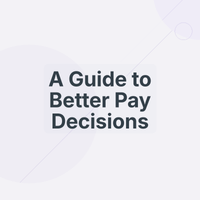
Promotion Trends in Tech Startups
Ever wonder how the number of employees getting promoted compares to other similar organizations?
Do you feel like employees in the Engineering department are getting promoted way too often?
Below is Kamsa’s benchmark data for promotion rates, along with common challenges and practical strategies to improve career progression opportunities for employees with your organization.
Promotion rates in tech startups can vary depending on the company’s growth stage, sector, and talent development approach. On average, you’ll find annual promotion rates between 5% and 15% of your workforce.
High-growth sectors like AI and software engineering are often at the top of this range, while G&A roles tend to see lower rates. For example, at Google and Meta, promotion rates for software engineers are reported to hover around 10% and 15%, driven by rapid skill development and performance expectations.
Promotions don’t happen evenly across all departments and functional areas, so understanding some nuances helps HR leaders set realistic goals:
-
Software Engineers: Typically on the higher end, with a focus on technical skill progression.
-
Sales: Often tied to quota achievements or customer success metrics.
-
G&A (HR, Legal, Finance): Promotions are less frequent, reflecting smaller teams and flatter structures.
Example: Companies like Salesforce prioritize promoting sales talent based on measurable growth metrics, while Stripe also fosters internal growth for G&A employees by encouraging cross-functional role expansion.
Common Challenges and Solutions
Challenge 1: Unclear Promotion Criteria
Many startups face challenges in creating clear paths for career progression, which can lead to frustration among high performers. Kamsa helps companies establish career path progressions while aligning each employee to the determined path.
Tip: Develop competency frameworks like those at Amplitude, which clearly outline the skills and experience needed to move up. Need help with the career path framework? Download Kamsa’s guide here.
Challenge 2: Limited Lateral Movement Opportunities
Employees, especially in G&A, may feel stagnant due to limited promotion opportunities.
Tip: Promote internal mobility and cross-functional roles, as seen at Airtable and Brex, to help employees broaden their skills and find new career paths.
The Importance of Feedback
Regular performance feedback is critical in preparing employees for their next role. Companies like Figma and Miro use continuous feedback loops to help employees close skill gaps and prepare for future promotions.
Mentorship Programs
Mentorship helps develop employees’ skills and prepare them for expanded roles or promotions and has a lasting impact on the career progression of the employee within the company. As employees are involved with mentorship, their performance will continuously improve, while enforcing a healthy company culture.
Example: Figma’s mentorship programs focus on developing key skills needed for expanded roles, ensuring employees are ready to step into leadership or higher-impact positions.
Promotions are a key driver of employee satisfaction, especially in a competitive tech environment. By implementing clear career path frameworks, fostering internal mobility, and investing in mentorship programs, leaders can better support talent development and retention.
Kamsa's Compensation Review tool helps company leaders make consistent and equitable decisions when it comes to salary increases and promotions.


